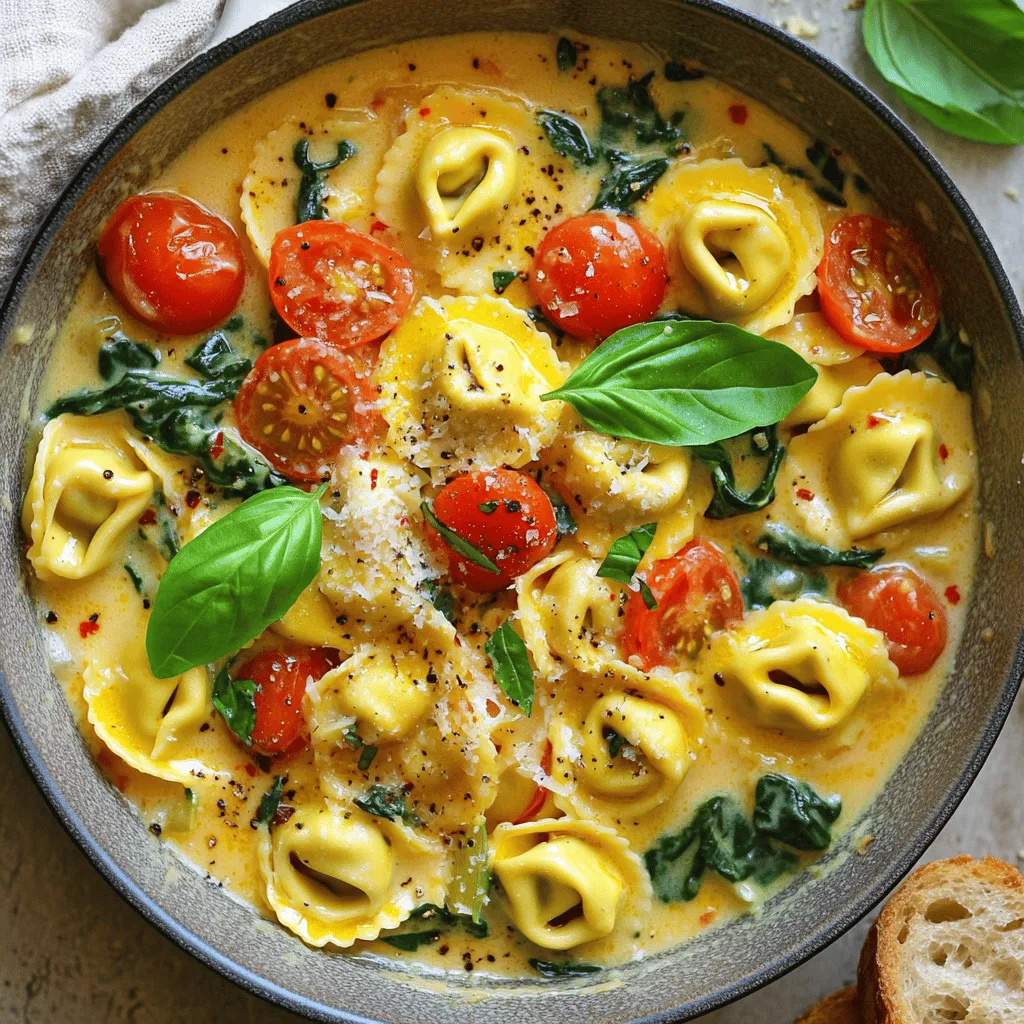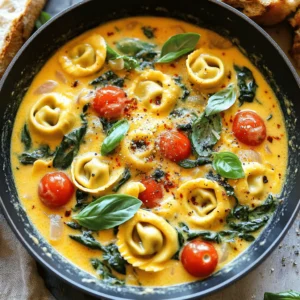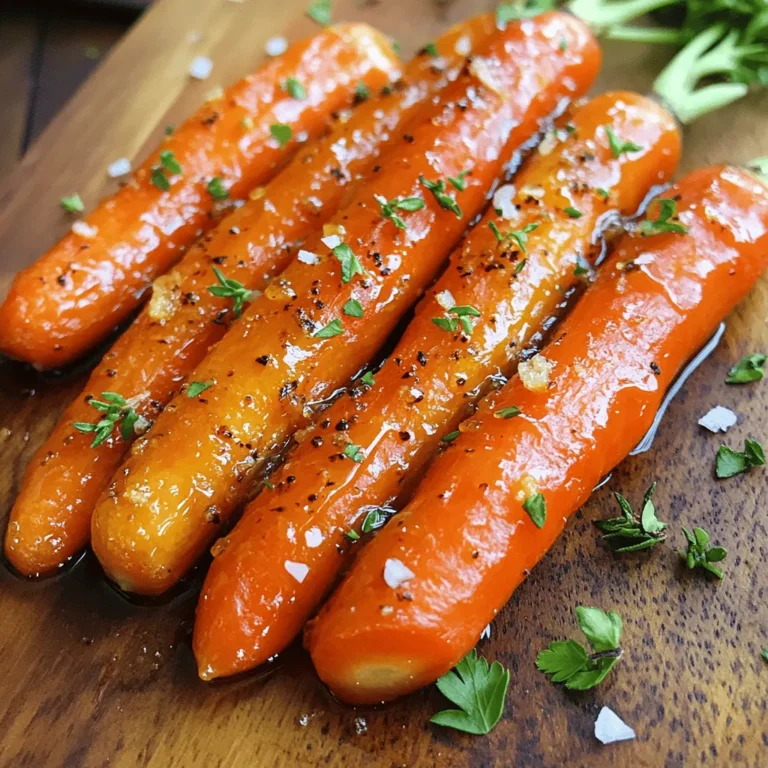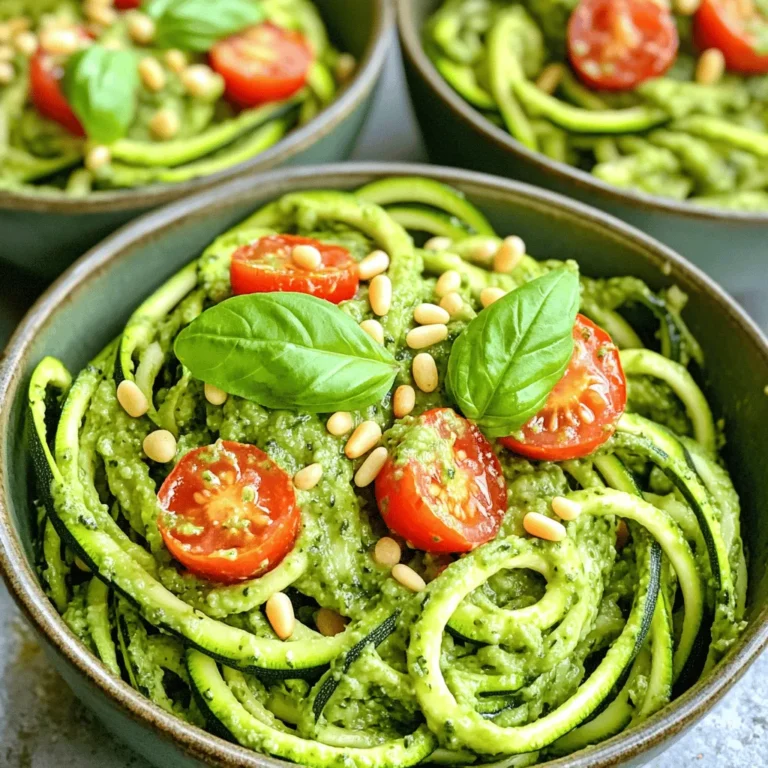Tuscan Tortellini Skillet Satisfying and Simple Meal

Are you looking for a quick meal that packs flavor? The Tuscan Tortellini Skillet is your answer! This dish combines fresh cheese tortellini, vibrant cherry tomatoes, and healthy spinach. With just a few simple steps, you can whip up a satisfying dinner in no time. Let’s dive into the ingredients and make this delicious meal together!
Ingredients
Main Ingredients
- 12 oz fresh cheese tortellini
- 1 cup cherry tomatoes, halved
- 1 cup fresh spinach leaves, roughly chopped
Fresh cheese tortellini brings a rich flavor. You can find it in the pasta aisle. Cherry tomatoes add a sweet burst. Halving them helps release their juices. Spinach leaves provide a vibrant color and healthy crunch. This mix makes a great base for our dish.
Seasonings and Condiments
- 1 tablespoon extra virgin olive oil
- 1 teaspoon dried Italian seasoning
- 1/4 teaspoon red pepper flakes (or to taste)
Extra virgin olive oil gives depth. It also helps the garlic cook evenly. Dried Italian seasoning adds classic flavors. Red pepper flakes add heat. You can adjust them based on your taste.
Dairy Components
- 1/2 cup heavy cream
- 1/2 cup freshly grated Parmesan cheese
Heavy cream makes the sauce rich and smooth. It blends well with the other ingredients. Parmesan cheese adds a salty, nutty flavor. Grating it fresh also gives the best taste. Together, they create a creamy sauce that coats the tortellini perfectly.
Step-by-Step Instructions
Preparing the Base
- First, warm 1 tablespoon of extra virgin olive oil in a large skillet over medium heat.
- Once the oil is hot, add 3 cloves of finely minced garlic. Sauté for about 1 minute until golden and aromatic.
- Next, add 1 cup of halved cherry tomatoes to the skillet. Cook them for about 3 to 4 minutes. You want them to soften and release their juices.
Incorporating Fresh Ingredients
- Once the tomatoes have softened, stir in 1 cup of roughly chopped spinach leaves. Cook for another 1 to 2 minutes until the spinach wilts and brightens.
- After that, sprinkle in 1 teaspoon of dried Italian seasoning and 1/4 teaspoon of red pepper flakes. Season with sea salt and freshly ground black pepper to taste. Mix everything to blend the flavors.
Completing the Dish
- Now, it’s time to add the fresh cheese tortellini. Gently stir to coat them in the mixture. Pour in 1/2 cup of heavy cream and bring it to a gentle simmer.
- Allow the dish to cook for 5 to 7 minutes. Stir occasionally until the tortellini is tender. Finally, fold in 1/2 cup of freshly grated Parmesan cheese. Let it melt into a creamy sauce.
- Taste the mixture and adjust the seasoning if needed. Remove the skillet from heat and garnish with fresh basil leaves before serving.
Tips & Tricks
Cooking Tips
To ensure your tortellini is perfectly cooked, follow these steps:
- Use fresh tortellini: Fresh cheese tortellini cooks in just 5-7 minutes.
- Taste as you cook: Check for tenderness before removing from heat.
- Avoid overcooking: Too much time in the skillet makes it mushy.
Adjusting seasoning to your taste is key. Here’s how:
- Start small: Add a pinch of sea salt and black pepper first.
- Taste often: After each addition, taste to find your perfect flavor.
- Spice it up: If you love heat, add more red pepper flakes gradually.
Presentation Ideas
Serving suggestions can elevate your dish. Here are my favorites:
- Shallow bowls: Serve tortellini in shallow bowls for a nice look.
- Extra Parmesan: Top with more grated Parmesan for flavor and style.
- Fresh basil: Add a few leaves for color and aroma.
Ideal drink pairings enhance the meal. Consider:
- White wine: A light white wine complements the creamy sauce beautifully.
- Sparkling water: A refreshing sparkling water balances the richness.
Kitchen Tools Needed
The right tools make cooking easier. Here’s what you need:
- Large skillet: A non-stick or cast-iron skillet works best for even cooking.
- Wooden spoon: Use it to stir and combine ingredients without scratching your skillet.
- Measuring cups and spoons: Precise measurements help achieve the best flavor.

Variations
Ingredient Substitutions
You can swap out ingredients in this dish to match your taste. Here are some ideas:
- Using different vegetables: Try bell peppers, zucchini, or broccoli instead of spinach. Each adds a fresh flavor.
- Alternative protein additions: Add cooked chicken, shrimp, or sausage for extra protein. These options can make the meal heartier.
Dietary Modifications
If you have specific dietary needs, this recipe can adjust easily:
- Making it vegetarian or vegan: Use plant-based cream and cheese. You can replace tortellini with a vegan option. This keeps the dish tasty and meat-free.
- Gluten-free options: Look for gluten-free tortellini at the store. You can also use rice or quinoa instead of tortellini for a gluten-free base.
Flavor Enhancements
Boost the taste of your Tuscan Tortellini Skillet with these additions:
- Adding spices or herbs: Include fresh herbs like oregano or thyme. A pinch of smoked paprika can add depth and warmth.
- Incorporating additional cheeses: Use mozzarella or feta alongside Parmesan. This gives your dish a rich and creamy texture.
These variations let you customize your Tuscan Tortellini Skillet. You can make it fit your taste or dietary needs while keeping it fun and delicious!
Storage Info
Storing Leftovers
To keep your Tuscan Tortellini Skillet fresh, store it in the fridge. Place it in an airtight container. This helps to avoid moisture loss and keeps the flavors intact. Use the leftovers within three days for the best taste.
- Best practices for refrigeration:
- Let the dish cool down to room temperature.
- Avoid leaving it out for more than two hours.
- Label your container with the date.
- Storing tips for prolonging freshness:
- Keep the Parmesan cheese separate if possible.
- Refrain from mixing in extra ingredients until you reheat the dish.
Reheating Instructions
Reheating is easy and quick. You want to warm it up without losing flavor. Use medium heat on the stove or the microwave for fast options.
- Methods for reheating without losing flavor:
- Heat on the stove with a splash of water or cream.
- Stir often to avoid burning.
- Quick reheating options:
- Use the microwave. Heat in short bursts, stirring in between.
- Cover the dish with a damp paper towel to keep moisture.
Freezing Suggestions
Freezing is great for long-term storage. It lets you enjoy this meal later. However, some textures may change.
- Freezing instructions for long-term storage:
- Cool the dish completely.
- Place it in a freezer-safe container.
- Leave some space at the top for expansion.
- Thawing and reheating after freezing:
- Thaw in the fridge overnight before reheating.
- Reheat on the stove or microwave as mentioned above.
These steps will help you enjoy your Tuscan Tortellini Skillet at its best, whether fresh or reheated!
FAQs
How long does it take to make Tuscan Tortellini Skillet?
The total time to make this dish is 30 minutes. You need 10 minutes to prep the ingredients and 20 minutes to cook. This quick meal is perfect for busy nights.
Can I use frozen tortellini in this recipe?
Yes, you can use frozen tortellini. Just add them directly to the skillet. No need to thaw them first. You may need to cook them a bit longer. Check the package for specific cooking times.
What can I serve with Tuscan Tortellini Skillet?
This dish pairs well with several sides. Here are some suggestions:
- Crusty bread for dipping
- A light salad with vinaigrette
- Roasted vegetables for extra flavor
- Garlic bread for a classic touch
Feel free to mix and match based on your taste!
This blog covered how to make a delicious Tuscan Tortellini Skillet. We explored the key ingredients like fresh tortellini, cherry tomatoes, and spinach. I shared step-by-step instructions and helpful tips for cooking and presentation. You learned how to store leftovers and even variations to fit your diet.
Remember, this dish is easy to customize. With fresh ingredients and a few simple steps, you can create a meal that impresses. Enjoy cooking and savoring this tasty dish!



![- 4 bone-in chicken thighs, skin-on - 2 medium zucchinis, sliced into half-moons - 1 bell pepper (red or yellow), chopped into bite-sized pieces - 1 cup cherry tomatoes, halved - 1 red onion, cut into wedges - 4 cloves garlic, minced - 1/4 cup extra virgin olive oil - Juice of 2 fresh lemons - Zest of 1 lemon - 2 teaspoons dried oregano - 1 teaspoon smoked paprika - Sea salt and freshly cracked black pepper to taste - Fresh parsley, finely chopped for garnish Using fresh ingredients makes this dish taste great and healthy. Chicken thighs have good flavor and keep moist while cooking. Zucchini and bell peppers add vitamins and minerals. Cherry tomatoes offer a sweet burst with every bite. Garlic adds depth and may boost your immune system. Olive oil is a healthy fat that helps with heart health. Fresh lemon juice brightens the dish and adds vitamin C. Oregano and paprika bring warmth and nice aroma to the meal. You can swap chicken thighs for chicken breasts if you prefer leaner meat. Use any bell pepper color you like. If you have other veggies on hand, such as carrots or green beans, feel free to add them. For a different flavor, try using lime juice instead of lemon juice. If you don't have fresh garlic, garlic powder works too. You can replace olive oil with avocado oil for a similar taste. Start by making the marinade. In a medium bowl, mix together the olive oil, lemon juice, lemon zest, minced garlic, dried oregano, smoked paprika, sea salt, and black pepper. Whisk this mix until it’s smooth and bright. Next, take your chicken thighs. Place them in a large resealable bag or a shallow dish. Pour half the marinade over the chicken. Make sure each piece gets coated well. Seal the bag or cover the dish. Let it sit in the fridge for at least 30 minutes, or up to 2 hours for extra flavor. While the chicken marinates, preheat your oven to 425°F (220°C). This step is key for perfect roasting. Now, prepare your veggies. In a large bowl, toss together the sliced zucchini, chopped bell pepper, halved cherry tomatoes, and onion wedges. Drizzle the remaining marinade over the veggies. Toss them gently to coat evenly. Once prepped, line a sheet pan with parchment paper. This helps with easy cleanup. Place the marinated chicken in the center of the pan. Surround it with the veggies, spreading them out nicely. Put the sheet pan in the oven. Bake for 30 to 35 minutes. The chicken should reach an internal temperature of 165°F (75°C). The veggies should become tender and slightly caramelized. To check if the chicken is done, use a meat thermometer. Insert it into the thickest part of the thigh. If it reads 165°F (75°C), it’s ready. If not, bake a bit longer, checking every few minutes. Once done, take the pan out of the oven. Let it rest for a few minutes. This helps keep the juices in the chicken. Finish with a sprinkle of fresh parsley for color before serving. Enjoy your meal! To get the most flavor, marinate the chicken thighs. Use a mix of lemon juice, zest, garlic, and spices. This mix creates a tasty coating that seeps into the meat. I recommend marinating for at least 30 minutes. For deeper flavor, marinate for up to 2 hours. Always keep the chicken in the fridge while it soaks. This keeps it fresh and safe to eat. Seasoning is key to making your dish pop. Use sea salt and freshly cracked black pepper. They enhance the chicken and veggies. You can also try smoked paprika for warmth and depth. Dried oregano adds a nice herb flavor. Make sure to sprinkle seasonings evenly over everything. Taste as you go to ensure the flavors are just right. Cleanup can be a breeze with parchment paper. Line your sheet pan with it before adding the chicken and veggies. It prevents sticking and makes for easy cleanup. Once the meal is done, just toss the paper away. You can spend more time enjoying your meal, not scrubbing dishes. This little trick saves time and effort in the kitchen. {{image_4}} You can swap chicken thighs for other proteins. Try bone-in chicken breasts or turkey thighs. They will give you a similar juicy flavor and texture. If you want something lighter, go for shrimp or firm tofu. Shrimp cooks fast and adds a sweet touch. Tofu soaks up the lemon flavor well. Make sure to adjust your cooking time based on what protein you choose. Using seasonal veggies makes your dish fresh and vibrant. In the summer, use squash, corn, or eggplant. For fall, add sweet potatoes or Brussels sprouts. Winter calls for hearty greens like kale or root vegetables. You can mix different colors and textures for a fun look. Don’t be afraid to get creative and use what you love! Herbs and spices can really change your dish. For a fresh taste, add thyme or rosemary. If you want a kick, sprinkle in some red pepper flakes. For a bit of sweetness, try adding a dash of cinnamon. Feel free to mix and match spices. Experimenting can lead to unique flavors that you’ll want to make again! For the full recipe, check out the Zesty Sheet Pan Lemon Chicken & Veggie Medley. To store leftovers, let the chicken and veggies cool first. Transfer them to an airtight container. This keeps them fresh and prevents odors. You can store them in the fridge for up to three days. If you want to keep them longer, freezing is a great option. When you’re ready to eat, reheating is simple. Preheat your oven to 350°F (175°C). Spread the chicken and veggies on a baking sheet. Heat for about 15 to 20 minutes, or until warmed through. You can also use a microwave. Place the food in a microwave-safe dish, cover loosely, and heat in short bursts. Stir in between to ensure even heating. If you plan to freeze your leftovers, do it as soon as they cool. Place portions in freezer bags or containers. Remove as much air as possible to avoid freezer burn. This dish can last for up to three months in the freezer. When you’re ready to eat, thaw it overnight in the fridge before reheating. This method keeps the flavors intact and makes for a quick meal. For more delicious ideas, check out the [Full Recipe]. To make sheet pan lemon chicken and veggies, start by prepping the marinade. Mix olive oil, lemon juice, lemon zest, garlic, oregano, smoked paprika, salt, and pepper in a bowl. This creates a zesty mix. Next, marinate the chicken thighs in half of this mixture for at least 30 minutes. While the chicken marinates, preheat your oven to 425°F (220°C). Prepare your veggies by mixing zucchini, bell pepper, cherry tomatoes, and red onion in another bowl. Toss them with the leftover marinade. Line a sheet pan with parchment paper for easy cleanup. Place the marinated chicken in the center and surround it with the vegetables. Bake for 30-35 minutes at 425°F until the chicken reaches 165°F (75°C). Let it rest before serving. For the full recipe, check out the complete guide. Yes, you can use boneless chicken for this recipe. Boneless chicken cooks faster than bone-in chicken. Adjust the cooking time to about 20-25 minutes. Ensure the chicken reaches an internal temperature of 165°F (75°C) for safety. Boneless chicken will soak up the marinade well, giving a great flavor. Many vegetables pair well with lemon chicken. Here are some great options: - Broccoli - Carrots - Asparagus - Bell peppers - Green beans - Brussels sprouts These veggies add color and nutrition to your meal. They also complement the lemon flavor nicely. You can use a mix of your favorites for a colorful dish. You learned how to make a great sheet pan lemon chicken and veggies dish. We covered ingredients, cooking steps, and tips for the best flavor. Remember to try different proteins, veggies, and flavors to mix things up. Storing your leftovers correctly ensures they stay fresh longer. Now, enjoy your tasty meal. Happy cooking!](https://dishtreats.com/wp-content/uploads/2025/06/6619f650-0475-47be-ab23-3ec1a8437763-768x768.webp)

![- 8 oz linguine or spaghetti - 1 lb large shrimp, peeled and deveined - 4 cloves garlic, finely minced - 1/4 cup extra-virgin olive oil - 1 teaspoon red pepper flakes - 1/2 cup fresh parsley, finely chopped - 1 lemon, juiced and zested - Salt and freshly ground black pepper to taste - Grated Parmesan cheese (optional) To make Quick Garlic Shrimp Pasta, you need fresh and quality ingredients. The base of this dish is linguine or spaghetti, which holds the sauce nicely. I love using large shrimp because they cook quickly and have a great flavor. Garlic is a must here. It adds a rich, aromatic taste that makes the dish special. Next, the olive oil brings everything together. I always choose extra-virgin for its fresh and fruity flavor. Red pepper flakes add that perfect kick. Adjust the amount to fit your spice level. Fresh parsley brightens the dish, making it look vibrant. The lemon juice and zest add a zesty touch that balances the richness. Don’t forget salt and pepper to enhance all the flavors. If you want to make it extra savory, sprinkle some grated Parmesan cheese on top. These ingredients work together to create a dish that is simple yet full of flavor. For the full recipe, refer to the section above. - Bring a large pot of water to a boil. - Add salt to the water for flavor. - Cook the pasta according to the package instructions. - Reserve about 1 cup of the pasta water before draining. - Heat olive oil in a large skillet over medium heat. - Add minced garlic and red pepper flakes. - Sauté the garlic for about 30 seconds until fragrant. - Introduce the shrimp into the skillet. - Season the shrimp with salt and black pepper. - Cook for about 2-3 minutes until the shrimp turn pink and opaque. - Toss the cooked pasta into the skillet with the shrimp. - Add the reserved pasta water for creaminess. - Pour in lemon juice and zest for brightness. - Fold in the chopped fresh parsley for a fresh taste. - Taste and adjust seasoning if needed. - Plate the pasta into individual bowls. - Garnish with extra parsley and a lemon wedge. - Serve warm and enjoy this dish. For detailed cooking steps, check the Full Recipe. To get the best garlic taste, avoid burning it. When you heat garlic, it should become fragrant but not brown. Burnt garlic can taste bitter and ruin your dish. Start with medium heat and watch it closely. If you like spice, adjust the red pepper flakes. Add more for heat or less for mildness. Taste as you go, and find what suits you best. Cooking pasta to al dente is key. This means the pasta should be firm but not hard. Overcooked pasta can turn mushy and lose its bite. Before draining your pasta, save some pasta water. This starchy water helps the sauce stick and adds flavor. It’s a simple trick that makes a big difference! For side dishes, consider a fresh salad or garlic bread. These pair well with the pasta and add balance to your meal. When it comes to wine, a crisp white wine works best. Look for a Sauvignon Blanc or a Pinot Grigio. These wines enhance the garlic flavors and make the meal feel special. {{image_4}} You can switch up the pasta to fit your needs. Try whole wheat or gluten-free pasta. Both options work well with this dish and add a different taste. Fresh herbs can change the flavor too. Use basil or chives for a fresh twist. They brighten up the shrimp pasta and add a new layer of taste. You can explore other seafood options if you want. Scallops and calamari both taste great in this dish. They offer a nice change from shrimp while keeping the dish light. For a vegetarian version, use mushrooms instead of shrimp. Mushrooms have a meaty texture and soak up flavors well. This swap keeps the dish satisfying without meat. Want a richer sauce? Adding cream can make your dish more decadent. It gives the pasta a smooth texture that many love. You can also add cherry tomatoes for freshness. They pop with flavor and add color to your plate. This small change can elevate your garlic shrimp pasta experience. For a full recipe, check out the details above. To store leftover pasta, place it in an airtight container. Make sure to let it cool first. This helps prevent sogginess. You can keep it in the fridge for up to three days. After that, the shrimp may lose its quality. Always check for any off smells or changes in color before eating. When reheating pasta, use a skillet. This keeps the dish from getting too dry. Add a splash of water or olive oil to help. Heat it on low, stirring gently. Avoid using the microwave if you can. It can make the shrimp rubbery. Always taste a little before serving to ensure it's warm and flavorful. Yes, you can freeze garlic shrimp pasta! First, let the dish cool completely. Then, place it in a freezer-safe container. Leave some space for expansion. You can freeze it for up to two months. To thaw, move it to the fridge overnight. Reheat it on the stove, adding a bit of water or oil to restore moisture. You can make Quick Garlic Shrimp Pasta in about 30 minutes. - Prep time: 10 minutes - Cooking time: 20 minutes Yes, you can use frozen shrimp. Just thaw them first. - To thaw shrimp, place them in cold water for about 15-20 minutes. - Ensure shrimp are peeled and deveined before cooking. You can pair this dish with several sides: - A fresh garden salad - Garlic bread for dipping - Steamed vegetables like broccoli or asparagus To reduce the spice, you can: - Use fewer red pepper flakes or omit them. - Add more olive oil or butter to mellow the heat. I recommend using linguine or spaghetti. - These pasta types hold the sauce well. - You can also try fettuccine for a different texture. For the full recipe, refer to the [Full Recipe]. Quick Garlic Shrimp Pasta is simple and tasty. You learned about key ingredients, cooking steps, and useful tips. I focused on making garlic and shrimp shine while keeping it easy. You can swap out ingredients, store leftovers, and reheat without losing flavor. Try different flavors to make it your own. Follow these steps, and enjoy a delicious meal any day of the week. Cooking should be fun and satisfying, so gather your ingredients and start creating!](https://dishtreats.com/wp-content/uploads/2025/06/6901a993-fcd3-4db1-9297-5790b6f94dfa-768x768.webp)

